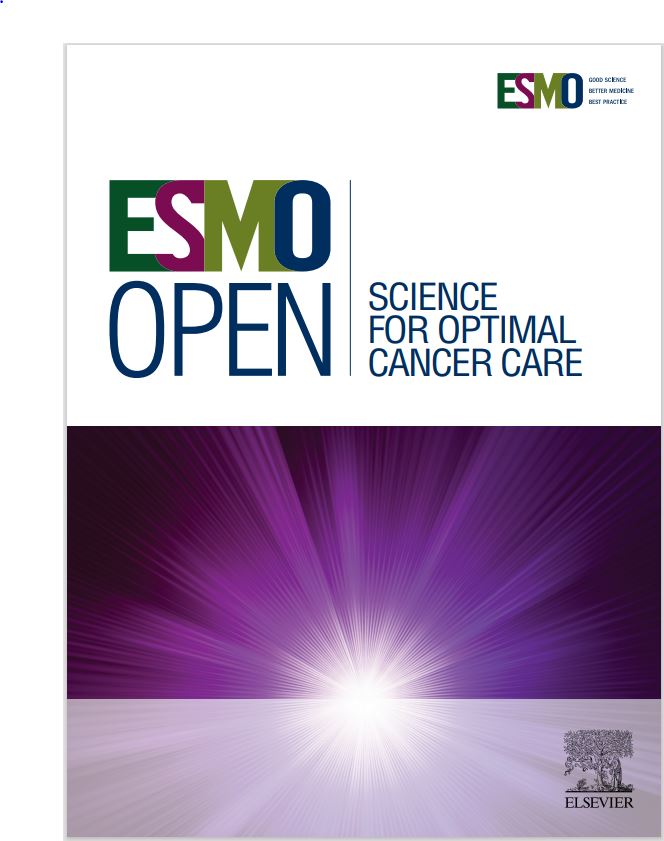从单克隆伽玛病到多发性骨髓瘤进展的潜在疾病状况的定量风险:一项全国性队列研究
IF 8.3
2区 医学
Q1 ONCOLOGY
引用次数: 0
摘要
这项全国范围的真实数据队列研究开发了一种风险评分模型,用于预测未确定意义的单克隆γ病(MGUS)到症状性多发性骨髓瘤(MM)的进展。材料和方法本研究使用了涵盖几乎整个韩国人口的健康保险审查和评估服务数据库。在5361例MGUS患者中,345例(6.4%)被诊断为MM,其中253例(73.3%)进展为症状性MM。结果我们确定女性、慢性肺部疾病、消化性溃疡疾病、糖尿病和非恶性血液病为重要危险因素,并将这些因素纳入风险评分模型。使用该模型可以将MGUS患者分为低、中、高风险组,以确定进展为症状性MM。高危组与低危组危险度比(HR)为2.53[95%可信区间(CI) 1.70 ~ 3.75],中危组与低危组危险度比(HR)为1.38 (95% CI 1.02 ~ 1.86)。结论该评分模型有助于早期发现有症状性MM高风险的MGUS患者,并允许更有效地将医疗资源分配给需要加强监测的患者。本文章由计算机程序翻译,如有差异,请以英文原文为准。
Quantitative risk of underlying disease conditions for progression from monoclonal gammopathy to multiple myeloma: a nationwide cohort study
Background
This nationwide real-world data cohort study developed a risk-scoring model to predict the progression of monoclonal gammopathy of undetermined significance (MGUS) to symptomatic multiple myeloma (MM) using prior disease conditions.
Materials and methods
The Health Insurance Review and Assessment Service database, which covers nearly the entire Korean population, was utilized in this study. Out of 5361 MGUS patients, 345 (6.4%) were diagnosed with MM, with 253 (73.3%) of them progressing to symptomatic MM.
Results
We identified female sex, chronic pulmonary disease, peptic ulcer disease, diabetes, and non-malignant hematologic disorder as significant risk factors and integrated these into the risk-scoring model. MGUS patients can be stratified into low-, intermediate-, and high-risk groups for progression to symptomatic MM using this model. The high-risk group showed a hazard ratio (HR) of 2.53 [95% confidence interval (CI) 1.70-3.75] compared with the low-risk group, and the intermediate-risk group showed an HR of 1.38 (95% CI 1.02-1.86) compared with the low-risk group.
Conclusion
This scoring model will help in the early detection of MGUS patients at high risk for symptomatic MM and allow for a more efficient allocation of health care resources to those patients who require intensive monitoring.
求助全文
通过发布文献求助,成功后即可免费获取论文全文。
去求助
来源期刊

ESMO Open
Medicine-Oncology
CiteScore
11.70
自引率
2.70%
发文量
255
审稿时长
10 weeks
期刊介绍:
ESMO Open is the online-only, open access journal of the European Society for Medical Oncology (ESMO). It is a peer-reviewed publication dedicated to sharing high-quality medical research and educational materials from various fields of oncology. The journal specifically focuses on showcasing innovative clinical and translational cancer research.
ESMO Open aims to publish a wide range of research articles covering all aspects of oncology, including experimental studies, translational research, diagnostic advancements, and therapeutic approaches. The content of the journal includes original research articles, insightful reviews, thought-provoking editorials, and correspondence. Moreover, the journal warmly welcomes the submission of phase I trials and meta-analyses. It also showcases reviews from significant ESMO conferences and meetings, as well as publishes important position statements on behalf of ESMO.
Overall, ESMO Open offers a platform for scientists, clinicians, and researchers in the field of oncology to share their valuable insights and contribute to advancing the understanding and treatment of cancer. The journal serves as a source of up-to-date information and fosters collaboration within the oncology community.
 求助内容:
求助内容: 应助结果提醒方式:
应助结果提醒方式:


